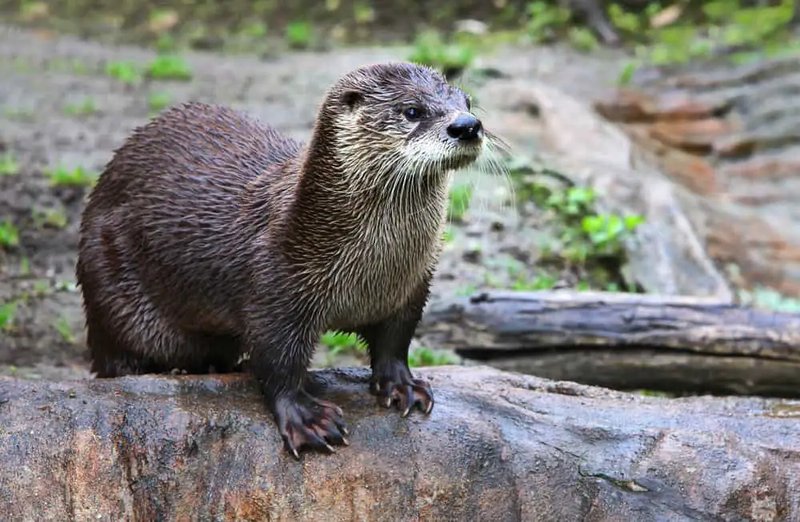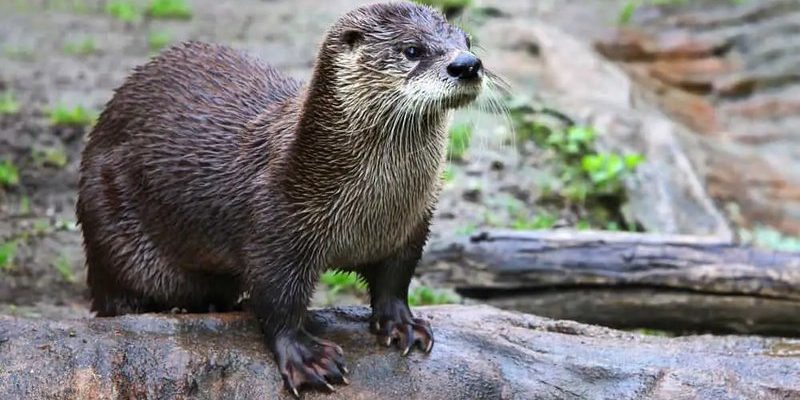
River otters are part of the weasel family, known for their agility in water and playful nature on land. They typically have a streamlined body, short legs, and thick fur. But they aren’t alone in the animal kingdom! From other otters to various playful mammals, there’s a fascinating array of creatures that resemble river otters in some way. So, grab a cup of coffee, and let’s explore these charming animals that share more than just a habitat with our furry friends.
1. North American River Otter
First up is the North American river otter, or simply the river otter we all know and love. These guys thrive in North America and are often spotted swimming in freshwater rivers, lakes, and coastal areas. They’re agile swimmers, thanks to their webbed feet and streamlined bodies.
What truly sets the river otter apart is its unique habit of sliding down muddy or snowy banks into the water—an activity they do just for fun! They have a soft, thick coat that helps keep them warm in chilly waters. If you come across an otter with a playfully mischievous demeanor and sleek fur, it’s likely a North American river otter you’re observing.
2. Sea Otter
Next on our list is the sea otter, a marine mammal that’s a bit different but still part of the otter family. Sea otters are larger than river otters and spend most of their lives in the ocean rather than freshwater. They have extra thick fur, which is crucial for keeping them warm in colder waters.
You might remember seeing sea otters floating on their backs, using rocks to crack open shellfish. This tool-use behavior is one of the many things that makes them fascinating. So, if you see an otter lounging on the water, surrounded by shells, chances are it’s a sea otter, not a river otter.
3. Eurasian Otter
The Eurasian otter is another close relative, primarily found across Europe and Asia. They have a similar appearance to river otters but tend to be a bit larger and have different coloration. These otters thrive in a variety of habitats, including rivers, lakes, and coastal areas.
One distinguishing feature of the Eurasian otter is its longer tail, which helps with swimming. Their fur is generally darker than that of a river otter, often appearing brown or black. If you’re exploring Europe and spot a solitary otter moving gracefully through the water, it’s likely a Eurasian otter enjoying its environment.
4. European Badger
Now, let’s move away from the water for a moment and check out the European badger. Though badgers and otters belong to different families, they share a similar stocky build and love for digging. Badgers have a broader head and shorter legs compared to otters and are predominantly terrestrial.
You might find badgers in forests or grasslands, foraging for worms, insects, and fruits. While badgers don’t have the playful aquatic nature of river otters, they both exhibit a certain charming clumsiness. If you spot a heavy, furry animal waddling about on land, it’s probably not an otter; it’s likely a badger.
5. Playful Ferret
Ferrets might be small, but they share a family resemblance with river otters. They have a long body, short legs, and curious personalities. Ferrets are domesticated and are known for their playful antics. Unlike otters, which enjoy water, ferrets are more at home on land, often seen tumbling around in a playful frenzy.
Although ferrets are smaller, they have similar patterns and markings that can remind you of river otters. If you’re in a pet store and spot a tiny creature rolling around in a ball, that’s a ferret, not an otter—but the playful spirit is there!
6. Sea Lion
Let’s not forget the sea lion! While they are larger and quite different in many ways, sea lions do share some playful characteristics with river otters. These marine mammals love to bask in the sun and are often seen swimming and leaping through the waves.
Sea lions have a more streamlined body and a larger head compared to river otters. They also have external ear flaps, unlike otters, which lack this feature. If you see a larger animal splashing around and barking in the ocean, it’s most likely a sea lion enjoying its time in the water.
7. Minks
Minks are fascinating animals that resemble smaller versions of river otters. They belong to the same family and have similar body shapes, with sleek fur and a long tail. Minks prefer being near water but are also comfortable on land, hunting for small rodents and birds.
A key difference is their size—minks are much smaller and have shorter legs compared to otters. If you encounter a tiny creature zipping along the water’s edge, it might just be a mink, living life just like its bigger otter cousins but in a more compact form.
8. American Badger
Similar to its European counterpart, the American badger is a stocky, digging mammal found across North America. They possess a similar shape to otters but are generally bulkier and more robust. American badgers spend a lot of time underground, creating extensive burrows.
While you wouldn’t mistake a badger for an otter when they’re together, their stout bodies and legs can create a fleeting resemblance. If you’re out in the fields and see a furry critter digging away, it might be an American badger, not a river otter.
9. Nutria
Nutria, or coypu, are large rodents that often live in wetland areas. They’re quite different from river otters but can sometimes be mistaken for them, especially due to their size and semi-aquatic lifestyle. Nutria have rounded bodies, webbed feet, and long whiskers, but they have a different shape than otters and more extensive teeth.
While river otters are playful and social, nutria are more solitary and wary of humans. If you spot a larger, reddish-brown creature munching on aquatic plants, it’s more likely a nutria looking for a snack rather than a river otter out for fun.
10. African Clawless Otter
Finally, we have the African clawless otter, which is a fascinating variation of our beloved river otter. Found primarily in sub-Saharan Africa, these otters have a similar appearance to river otters but tend to be larger and have differences in their paw structure, which lacks visible claws.
Their playful nature and aquatic skills make them engaging to watch, but their habitat is mostly limited to Africa. If you ever find yourself in Africa and spot a big, playful otter splashing about in a river, you may be lucky enough to see the unique African clawless otter!
As we’ve explored these ten animals similar to the river otter, it becomes clear that while they share certain traits, each has its own unique charm. Whether it’s the sleek sea otter or the playful ferret, all these creatures contribute to the beauty and diversity of our planet’s wildlife. Next time you’re by the water or wandering through the woods, keep your eyes peeled; you might just spot one of these delightful animals sharing the same space as the river otter!

